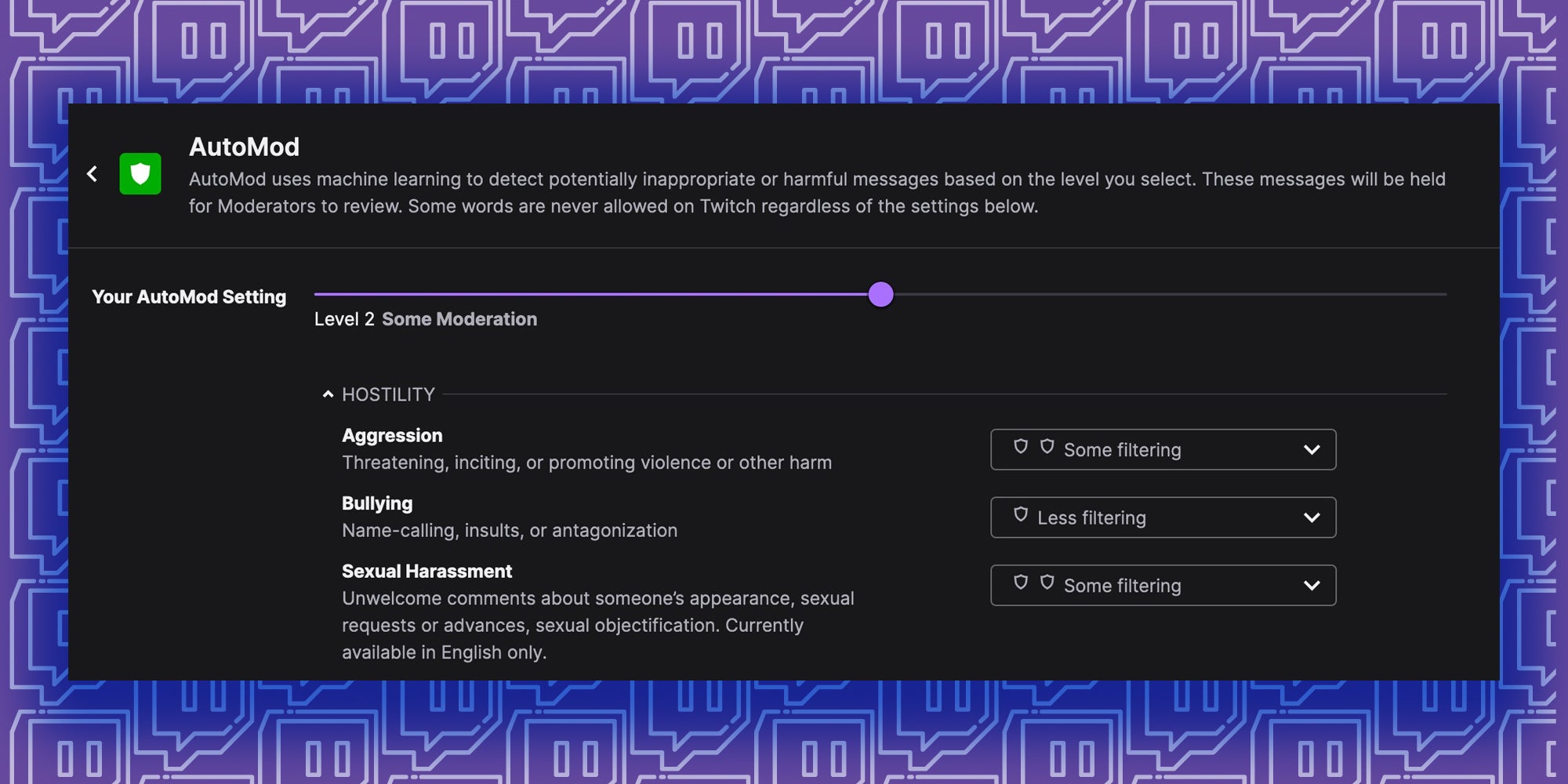
Twitch has committed itself to combating sexual harassment in two new ways: updating its policy, and adding a new category to its “AutoMod” tool.
In a blog post announcing the updates, the streaming platform said that while the policy remains “largely unchanged,” it has become “easier to understand.”
The main change to the policy was more clearly defining sexual harassment. Those in charge also made clear what conduct would be considered prohibited.
How does Twitch define sexual harassment?
Twitch then went on to break down the types of behaviors it defines as sexual harassment. This includes “unwanted comments,” including those “made using emojis/emotes-regarding someone’s appearance or body.”
“We define sexual harassment to encompass non-physical behaviors of a sexual nature that cause users to feel uncomfortable, degraded, unsafe, or discouraged from participation,” the streaming service said in a blog post.
Twitch also bans the creation and sharing of revenge porn, alongside “sexual requests or advances, sexual objectification, and negative statements or attacks related to a person’s perceived sexual behaviors or activities, regardless of their gender.”
What are the updates to Twitch AutoMod?
In addition to this, Twitch announced that it had developed a new AutoMod category. The category’s purpose is to filter out messages that could be defined as sexual harassment.
AutoMod is a tool that automatically detects troublesome language. It makes it easier for Twitch users to moderate their streams and filter out unwanted messages.
In similar vein to other AutoMod categories, it’s up to the moderator of the stream to choose how stringent they want these anti-harassment measures to be. Moderators will also be given the option of reporting any messages that they feel violate Twitch’s Community Guidelines.
At the time of writing, this category is already available in English, with more languages coming soon.




